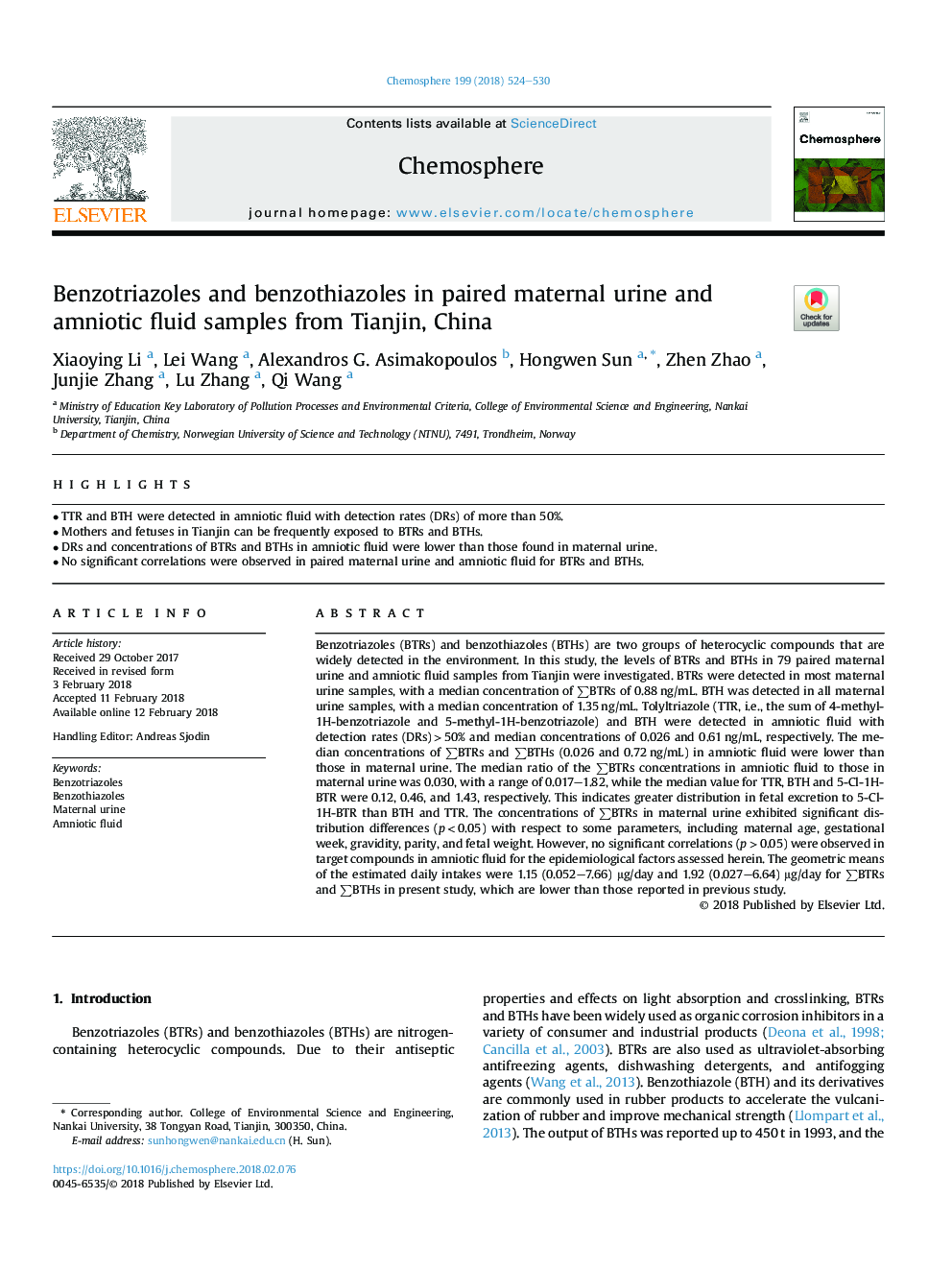| Article ID | Journal | Published Year | Pages | File Type |
|---|---|---|---|---|
| 8851727 | Chemosphere | 2018 | 7 Pages |
Abstract
Benzotriazoles (BTRs) and benzothiazoles (BTHs) are two groups of heterocyclic compounds that are widely detected in the environment. In this study, the levels of BTRs and BTHs in 79 paired maternal urine and amniotic fluid samples from Tianjin were investigated. BTRs were detected in most maternal urine samples, with a median concentration of âBTRs of 0.88â¯ng/mL. BTH was detected in all maternal urine samples, with a median concentration of 1.35â¯ng/mL. Tolyltriazole (TTR, i.e., the sum of 4-methyl-1H-benzotriazole and 5-methyl-1H-benzotriazole) and BTH were detected in amniotic fluid with detection rates (DRs)â¯>â¯50% and median concentrations of 0.026 and 0.61â¯ng/mL, respectively. The median concentrations of âBTRs and âBTHs (0.026 and 0.72â¯ng/mL) in amniotic fluid were lower than those in maternal urine. The median ratio of the âBTRs concentrations in amniotic fluid to those in maternal urine was 0.030, with a range of 0.017-1.82, while the median value for TTR, BTH and 5-Cl-1H-BTR were 0.12, 0.46, and 1.43, respectively. This indicates greater distribution in fetal excretion to 5-Cl-1H-BTR than BTH and TTR. The concentrations of âBTRs in maternal urine exhibited significant distribution differences (pâ¯<â¯0.05) with respect to some parameters, including maternal age, gestational week, gravidity, parity, and fetal weight. However, no significant correlations (pâ¯>â¯0.05) were observed in target compounds in amniotic fluid for the epidemiological factors assessed herein. The geometric means of the estimated daily intakes were 1.15 (0.052-7.66) μg/day and 1.92 (0.027-6.64) μg/day for âBTRs and âBTHs in present study, which are lower than those reported in previous study.
Related Topics
Life Sciences
Environmental Science
Environmental Chemistry
Authors
Xiaoying Li, Lei Wang, Alexandros G. Asimakopoulos, Hongwen Sun, Zhen Zhao, Junjie Zhang, Lu Zhang, Qi Wang,
